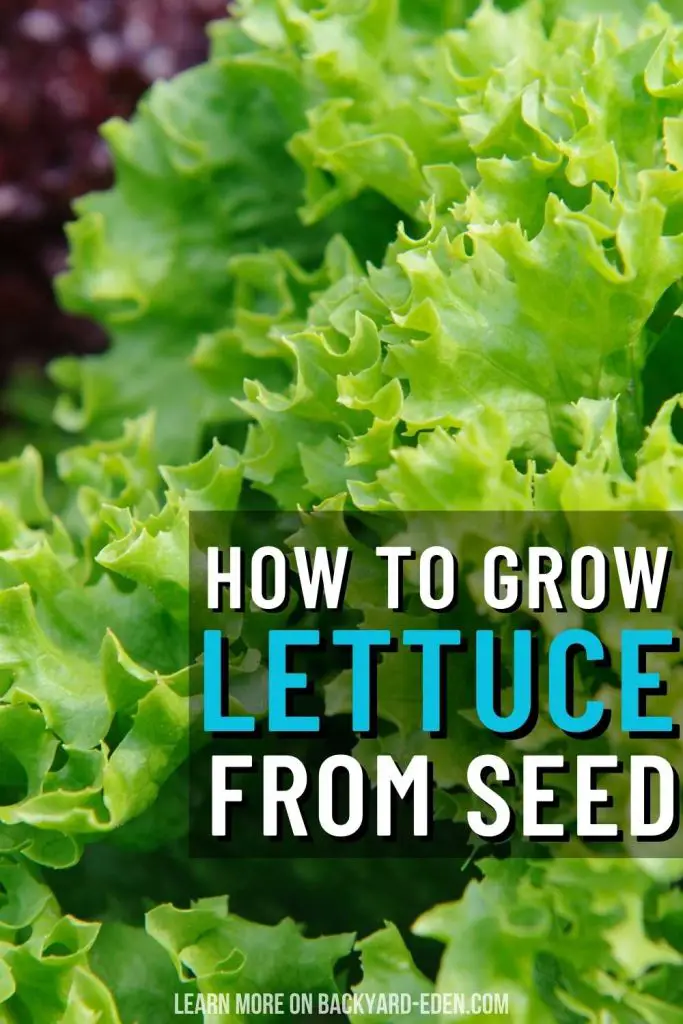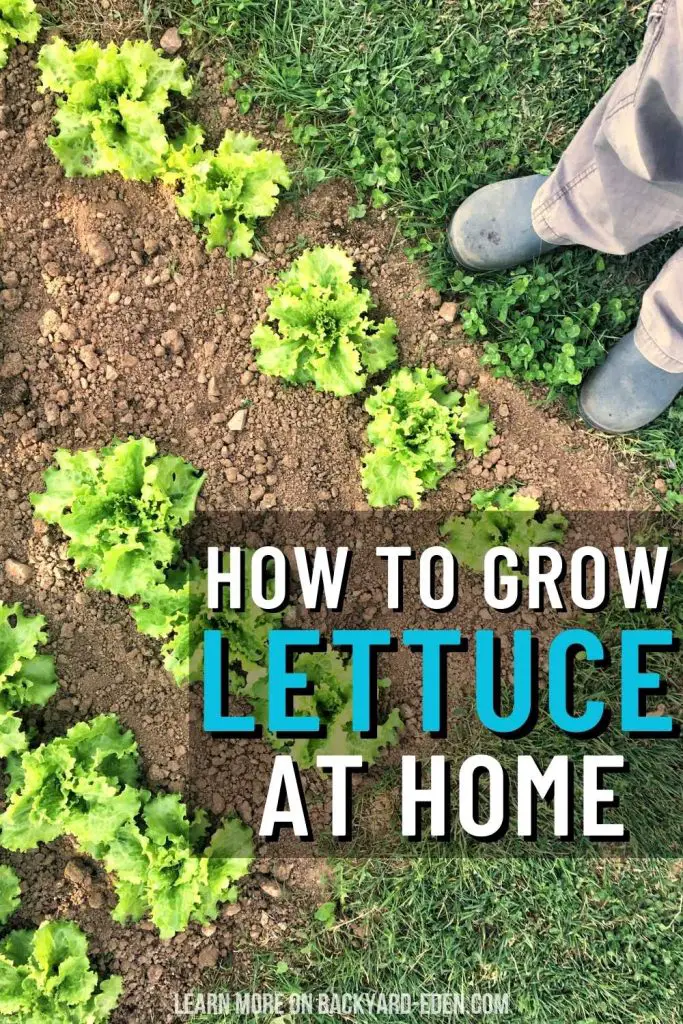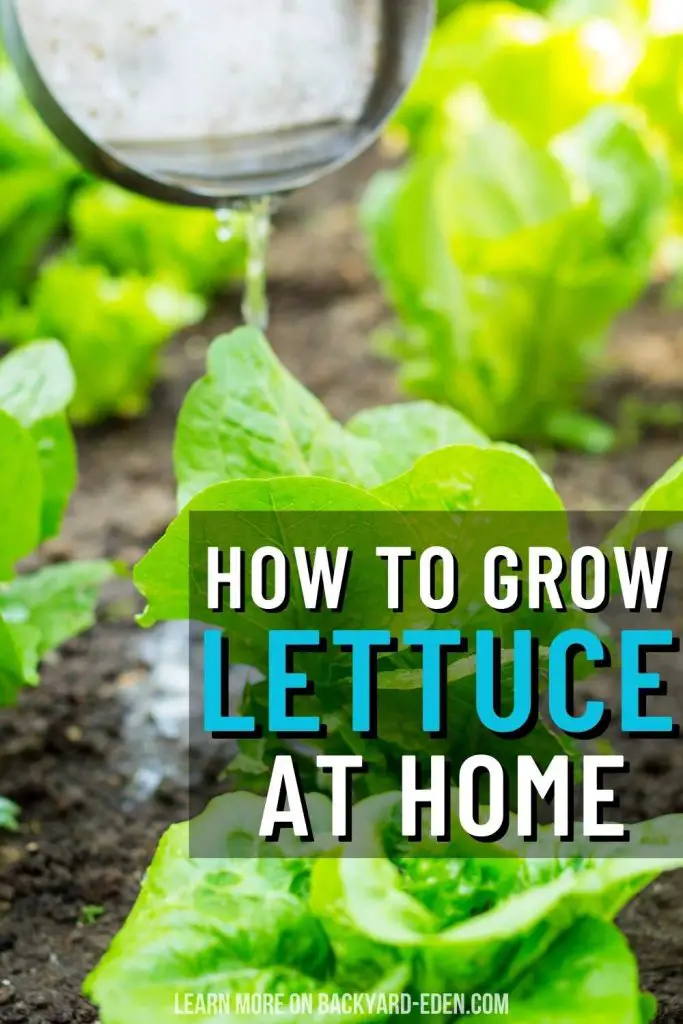How to Grow Lettuce
Growing lettuce for springtime salads is irresistible. But what if you could pick homegrown lettuce now through fall, without taking a break during the hot summer months when the plants tend to turn bitter and go to seed? You too can grow lettuce year round if you follow our simple guide.
How to Grow Lettuce
Lettuce can be grown year round in just about any zone if you put in the time, have the right varieties and do the proper planning.
Lettuce was something that we struggled with growing during the summer months for a long time, but with each season we learned that with the proper planning we could be quite successful.
Growing lettuce in late Spring and into Summer can be a bit of challenge where we live because of our blistering summer temperatures.
So, season after season we came up with a strategy that promises to keep your salad bowl full of delectable salad greens. Whether you like looseleafs, butterheads, flavorful Batavians, crispy romaines, or delicate baby greens every week of the gardening season; there is a lettuce for you.
Choosing The Right Type
There are several different types of lettuce and possibly thousands of different varieties with each bolstering a plethora of traits, how long they take to mature, and their tolerance for hot temperatures and long days. With this information, you can choose the right varieties for your garden in spring, summer, and fall.
Leaf lettuces
Leaf lettuces do not form heads but rather grow into clusters of leaves in a range of colors. They mature in about 50 days but can be harvested in as little as 30 days if you would like baby greens.
Leaf varieties generally grow best in cooler weather, so planning to grow them in spring or fall would be most productive depending on your zone.
They hold up to hot summer weather much better as baby greens than as mature plants.
Head Lettuces
Head lettuces typically will form a head that is harvested at one time rather then harvesting a few leaves at a time. Think of lettuces like Iceberg, Romain, and even things like butterhead. These types are great if you are plan on having enough space for these lettuces to form a head.
Butterhead, also known as Bibb and Boston lettuce, forms crumpled-looking heads with tender, dark green outer leaves and crunchy, light-colored hearts. Harvest butterheads when the inner leaves form a loose head, about 60 days after planting. There are some butterhead types, notably ‘Butter-crunch’ that hold well in hot weather, but this group typically does best in spring and fall.
Romaine varieties form upright heads with dark green or red-tinged outer leaves and crisp, whitish hearts. Green romaines, particularly ‘Jericho’ and ‘Paris Cos’, handle heat with aplomb, but red romaines tend to produce open heads and bolt in summer. Romaines take between 55 and 65 days to mature, but baby romaine leaves can be harvested in less than a month.
Batavian lettuce’s shiny leaves mature into loose, whorled heads with crisp hearts. Universities have conducted research by evaluating the bolting resistance of dozens of lettuce varieties and concluded that Batavians stayed crisp and tasty in heat and resisted going to seed longer than any other type of lettuce–in some cases holding for more than 100 days during the height of summer.
If you can find the Batavian variety that you like then this type is definitely a keeper for hot climates.
Crisphead lettuces, also known as iceberg, grow slowly—maturing in about 75 days–and produce very round, crunchy, pale green heads. While crispheads are known for their resistance to bolting in hot weather, they are prone to internal tip burn during summer and produce the best-quality heads in spring and fall.
Tips For Growing Your Own Lettuce
Tip # 1:
The first tip to being successful with growing lettuce is, even if your garden is small, grow at least three or four different lettuce varieties. That way, if a variety fails to meet your standards, other selections can fill in the gap. Grow a few varieties from each different group of lettuce for added diversity; select a mix of romaines, butterheads, loose-leaf and crisp-head types.
Tip # 2
The second tip is to build your soil. Building your soil is an investment in your gardening future. You want to cultivate soil in your garden that is loose, nutrient dense and loaded with organic material. I use my own homemade compost along with commercial compost and worm castings.
The compost provides the organic matter along with mulch that you can add while the worm castings adds in the microbial organisms that the soil needs. These steps will help to create a living soil which will sustain your garden for years to come and provide you with plenty of produce each year.
Sowing
Start sowing lettuce seed in spring as soon as the ground thaws and the soil is dry enough to rake. Lettuce needs light to germinate, so sprinkle the seeds on top of finely prepared, moist soil and cover them with an extremely light layer of screened compost or a little seed-starting mix. Sow lettuce in rows 10 to 12 inches apart if you plan to harvest mature plants.
Thin the stand when the seedlings have three or four leaves so that you give the remainder of the plants room to grow. You can use the lettuce you thinned out in a baby salad to make sure nothing goes to waste. If you plan on harvesting baby lettuces, sow seed in 3-inch-wide strips, spacing the strips 8 to 10 inches apart.
I also find that using the Square Foot Gardening Method is extremely effective for growing lettuce. If you are planting in the method or in the strip method you should hold off on thinning baby lettuces, because you want them to grow into a thick strip of greens for harvesting. I have also been known to just mix up lettuce seed and then broadcast them into an area making sure to overseed to ensure that I get a dense planting.
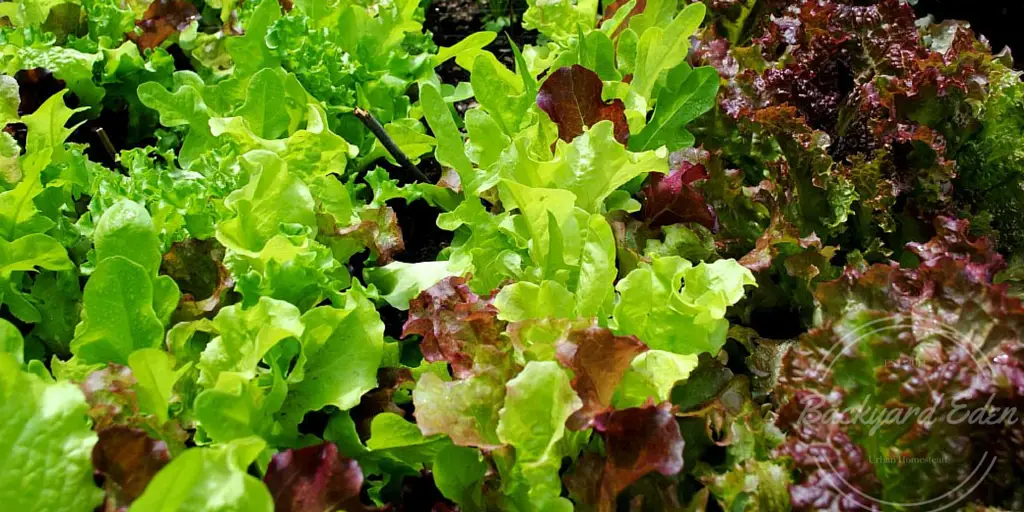
Tip # 3
The third tip to successfully extending your lettuce-eating season, is succession planting throughout the seasons. About two to three weeks before sowing lettuce seeds directly in your garden, start some in trays inside. Then transplant the seedlings outside at the same time you direct-sow seed.
The concept of succession planting is where you constantly have plants to put into your garden. I usually plant seeds directly into the ground every 7-10 days after my first planting. The transplants that you put out will be ready to harvest sooner, and while you are harvesting from them the direct sown seedlings will be growing to allow you a longer harvest period.
Lettuce grows quickly and typically does not need additional fertilizer during the growing season. In fact, fertilizing too much causes the plants to produce very lush leaves that attract aphids.
Gardeners can avoid most lettuce problems, including tip burn, bitterness, and fungal disease, by planting lettuce in a site that features full sun and well-drained soil with balanced fertility and by keeping the soil consistently moist but never soggy.

Harvesting
Harvest lettuce in the morning, when the plants’ cells are fully hydrated. For head and whole-leaf plants, slice the plant off at the soil line with a sharp knife. Pinch off individual leaves of leaf lettuce as needed and use scissors to cut baby-sized greens.
We like to have a variety of lettuces around the veggie patch so that we can harvest a few leaves from each for a fresh salad. With leaf varieties, just snip a few leaves off and it will regrow in a few days. After harvesting baby leaves, pour diluted fish emulsion on the row to encourage the greens to regrow quickly.
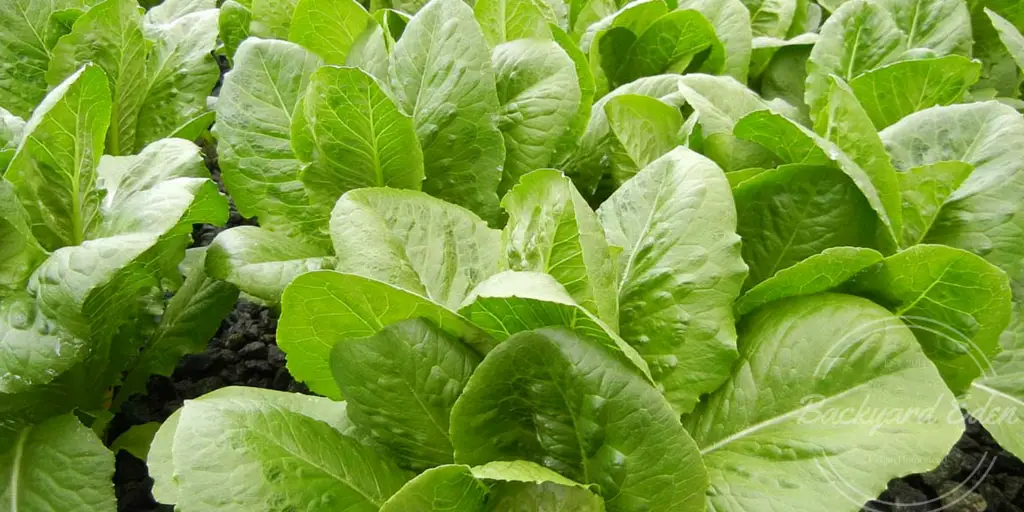
Growing lettuce continuously from spring through fall requires planning, because it matures at different rates depending on the season and variety. If your family eats salad every day, plan on growing two heads or a 2-foot-long band of baby greens per person each week to keep your family with fresh salad greens.
Tip # 4
The fourth tip to growing great lettuce all year is to make use of all the space in your garden. If you have space that gets shade, if you have space for containers; use it. Lettuce is pretty versatile and grows great in the shade so space that would normally be unusable for other garden veggies may be perfect for lettuce and other greens.
I have a spot in my garden that only gets about 2 hours of sun a day because of a structure but my salad greens do not seem to mind. Salad greens also grow well in containers in a variety of sizes which adds to their appeal. We have a number of pots placed around on our patio area that have different plants in them. I have grown lettuce in pots successfully for years with little to no effort.
If you like this article on how to grow lettuce, please share it on social media and with friends. For all the latest recipes, container gardening tips and growing guides subscribe to our newsletter in sidebar.
Also, check out our article on What is container gardening? or Best Herbs to Grow!
Be sure to Like us on Facebook and Follow us on Instagram, Twitter, and Pinterest!
